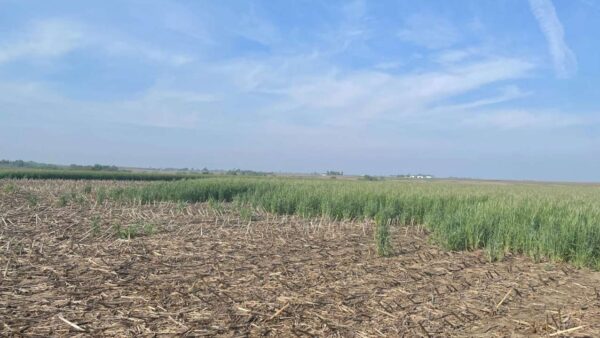Expanding the Toolkit
Seed companies have another tool in their public relations toolkit. Social media tactics such as blogs, Facebook, Twitter and YouTube are making inroads into the agriculture industry.
Monsanto has already had its fingers in many of the social media pies for approximately three years. The company’s YouTube channel features interviews with farmers and discussions about products; its Twitter account and Facebook page mention press releases, new website features or new YouTube videos, as well as answers to questions; and its blog focuses on more personal stories.
“We saw a lot of conversation out there about Monsanto and agriculture, and you want to be part of that conversation when it’s happening so we saw an opportunity to make sure there was accurate information available about our company,” says Monsanto media team lead Kelli Powers.
Kathleen Manning, social media specialist with Monsanto, says the company now has to think about who its target audience is and how best to reach them, either through social media or traditional media.
“We’ve had success over the past year making announcements or sharing news via our blog or our website, and we’ve seen just as much traction in terms of interest among farmer customers and reporters as we would from a traditional press release,” she says, noting social media is also a great way to reach reporters, who often have personal accounts on Twitter and follow others in the agriculture industry.
Monsanto is going one step further with its Twitter account by having employees, such as communications manager Nick Weber, tweeting to provide a personal professional perspective.
“I sprinkle in some personal stuff because our farmer customers, who we’re trying to have these conversations with, don’t just talk about farming. They might talk about Iowa State football or their favorite band. So I try to add some personal aspects to put a face behind Monsanto,” he says. “And it doesn’t happen overnight. You have to build trust and relationships.”
Weber feels implementing social media tactics is more time consuming in the beginning, but once everything is up and running the focus is on maintenance and relationship building.
More than Marketing
Social media can also be a valuable research tool, according to Weber.
“It can help a company get the pulse of agriculture much quicker,” he says. “What’s happening out in the countryside, or what farmers are saying that might be helpful for me in my job.”
Shannon Latham, vice-president of Latham Hi-Tech Seeds in Alexander, Iowa, agrees that watching conversations on various social media channels throughout North America is important.
“One thing to remember is to listen before you leap; get a feel for what the audience is talking about that day, that week, and remember that first and foremost, when you jump into the conversation, you should be doing so to offer timely, helpful information,” she says.
Latham’s goal is to provide useful, relevant information for growers in whatever form they choose to find it, whether it be social media or traditional media. Latham Hi-Tech Seeds uses a blog, Facebook, YouTube and Twitter to communicate with its growers.
“Our mission is to help farmers feed and fuel the world, so we keep this in mind as we handle our social media accounts,” says Latham. “We do our best to update content daily with helpful information or industry news that’s pertinent to growers.”
The company has been blogging for more than three years and using Facebook for about two years but only started using Twitter and YouTube more recently. Latham is pleased with the number of relationships the company has been able to establish using social media. On any given month, Latham Hi-Tech Seeds has approximately 1,000 unique visits to its blog, and currently has about 200 Facebook fans and 250 Twitter followers.
As Latham Hi-Tech Seeds continues to grow, Latham believes social marketing will play an even bigger role in helping the company’s sales force spread important information to growers in its area.
“We don’t believe that the traditional methods of communication are going to disappear as some predict, but we do believe that combining social media with traditional media provides a great opportunity to reach a larger audience,” she says.
Recruitment Tactics
Dow AgroSciences is also trying to reach a larger audience through various social media tactics, specifically new recruits.
In March 2010, Dow AgroSciences announced an expansion with plans to hire approximately 550 new employees. The company is currently using social media such as a Twitter account and a Facebook page to attract new talent.
“We’ve really turned up our efforts in using social media for recruitment because it’s a very powerful tool,” says Linda Calvin, Dow AgroSciences global digital marketing manager, noting the initial response has been positive but it’s still too early to tell how successful those efforts will be.
Dow AgroSciences has been using Facebook and Twitter for approximately two years, and has a few YouTube channels. The company has also been investigating blogs.
“We’re trying to use social media to bolster our presence in the digital landscape and engage people,” says Calvin.
Dow AgroSciences also recently experimented with advertising on Facebook, which looks at the likes and interests of people and allows you to display ads to those audiences, says Calvin.
“It’s one of those things we’re dipping our toe in to understand the strengths and weaknesses,” she says.
Calvin recommends testing various social media tactics to determine which fit best with your company’s goals. There are people in the agricultural industry using social media, she says, and getting on board is a good way to reach them.
“It takes time and planning and understanding your target audience and message,” she says. “But banning social media just stifles the conversation.”
Dealing with the Negatives
Dow AgroSciences realizes these conversations could include negative comments so the company has developed processes on how to deal with those situations, says Calvin.
“If someone says this, how do we handle it? It’s not always going to be positive but this could be an opportunity to address a misunderstanding and change someone’s mind,” she says.
Shaun Haney of Haney Farms feels social media is a tool that is being underutilized in the agriculture industry because companies are scared of these negative conversations.
“Social media provides companies with the opportunity to have a direct conversation with various stakeholders whether that be consumers or people within the industry,” says the owner of Haney Farms in Picture Butte, Alta. “And a lot of companies are fearful of that two-way conversation because they’re used to dictating what the message is through advertising campaigns and marketing.”
Haney, who has a Facebook page and Twitter account for his family-run seed company, believes social media is about engagement, and companies should avoid having stagnant social media.
“There are a lot of companies that have a Facebook page or a Twitter account but they have it just to have it,” he says. “They’re not necessarily using it even remotely close to what they could be.”
On the flip side, Haney cautions companies about falling into the false trap of thinking social media is the only way to communicate.
“These are various tools to communicate to different target markets,” he says.
Teresa Falk












